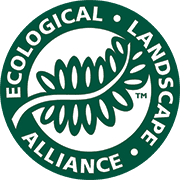There is no excerpt because this is a protected post.
Designing Ecological Landscapes
Landscapes that mimic natural systems deliver important ecosystem services and are also aesthetically pleasing. Guided by principles that reduce resource consumption, ecologically designed landscapes provide natural solutions when land is disturbed by the construction of buildings or roadways, and they support landscaped communities from tiny rooftops to grand urban parks.
Protected: Ecological Gardeners, Think Like a Forest When You Plant a Tree
There is no excerpt because this is a protected post.
Protected: Urban Planting with the Rose Kennedy Greenway
There is no excerpt because this is a protected post.
Protected: Growing Native and Naturalized Perennials for Pollinators
There is no excerpt because this is a protected post.
Protected: Excerpt from Lawns Into Meadows, 2nd Edition
There is no excerpt because this is a protected post.
Protected: The Bower: A Creative Ecological Endeavor
There is no excerpt because this is a protected post.
Sowing protocols and decision-making for growing native plants from seed
Written by: Will Larson Growing native plants from seed is a constant exercise in replicating habitat. We expose the seed to specific pre-treatment conditions to simulate the contexts and pressures…
Local Seed Collection
Written by: Molly Marquand Go local: Over the course of the last decade, native plants have garnered a place in the spotlight of popular horticulture. However, most of the…
Tips, Tricks, and Techniques
Written by Zach McElgunn, ELA Staff This month’s tips, tricks, and techniques draw on the work and advice of Rosmarie Lohnes (Designer President, Helping Nature Heal). Rosmarie joined ELA members…
On Deck: The R & R Conference
Written by: Julie Snell, ELA Board Member The conference formerly known as The Mid-Atlantic ELA Conference is returning live and in person! If there was a silver lining in pandemic…
Pollinator Protection in Suburban Boston: Buzzworthy News
Written by: Breeka Lí Goodlander, CWS, Town of Franklin, MA “Save the Bees,” “Pollinator Patch,” and a myriad of other slogans are common-place today. One can’t travel far without seeing…
Planting a Species or a Cultivar— Will It Make a Difference?
Written by: Uli Lorimer, Director of Horticulture, ELA Board Member Gardeners in the Northeast are fortunate to have a wealth of plant choices available in nurseries, garden shops, catalogs, and…

